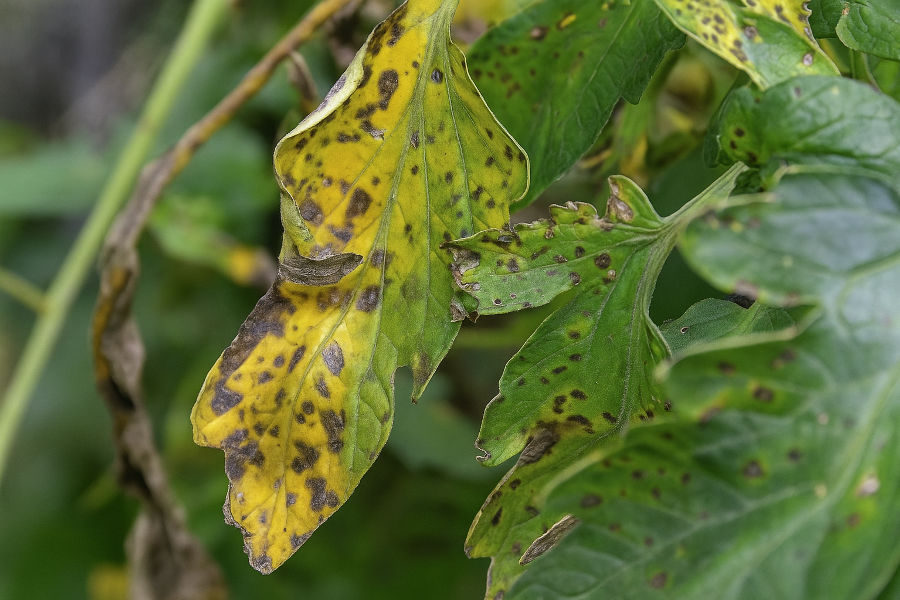Early Blight Control in Tomato: Symptoms, Causes, and Complete Management
What is Early Blight?
Early blight is a fungal disease caused by Alternaria solani. It affects tomato leaves, stems, and fruits. The disease appears as dark brown to black spots with concentric rings (target-like appearance), usually starting from the lower leaves and moving upward.
Symptoms:
-
Dark brown circular spots with concentric rings on older (lower) leaves
-
Yellowing around the spots; leaves eventually dry and fall off
-
Lesions or dark patches on stems, especially near the soil line
-
Fruit rot near the stem end in later stages
Causes / Favorable Conditions:
-
Warm, humid weather
-
Poor air circulation in the crop canopy
-
Overwatering or water staying on leaves (especially during night)
-
Infected crop residue remaining in the soil
Integrated Management of Early Blight
1. Cultural Practices:
-
Use certified disease-free seeds or healthy seedlings
-
Practice crop rotation – avoid planting tomato or potato in the same field for 2–3 years
-
Remove and destroy infected crop debris from the field
-
Avoid overhead irrigation; always water at the base of the plant
-
Maintain proper spacing between plants for better air flow
2. Resistant Varieties:
-
Prefer early blight-resistant tomato varieties such as ‘Arka Rakshak’, ‘Arka Abhijit’, or ‘Heemsohna’ (check region-wise suitability)
3. Organic & Biological Control:
-
Apply Trichoderma harzianum or Pseudomonas fluorescens through seed treatment or soil drenching
-
Spray neem oil (1500 ppm) at 7-day intervals
-
Use compost tea, jeevamrut, or cow dung-based bio-fungicides for preventive protection
4. Chemical Control (Only When Necessary):
-
Apply fungicides every 7–10 days depending on disease severity:
-
Chlorothalonil 75% WP @ 2g/litre of water
-
Mancozeb 75% WP @ 2.5g/litre of water
-
Azoxystrobin + Difenoconazole combination product as per label recommendation
-
Copper oxychloride @ 3g/litre for preventive spray
-
-
Always rotate fungicide groups to prevent resistance development in the fungus
Integrated management combining cultural, organic, and chemical approaches gives the most effective and sustainable control against early blight in tomato. Early detection and timely action are the keys to minimizing losses.
